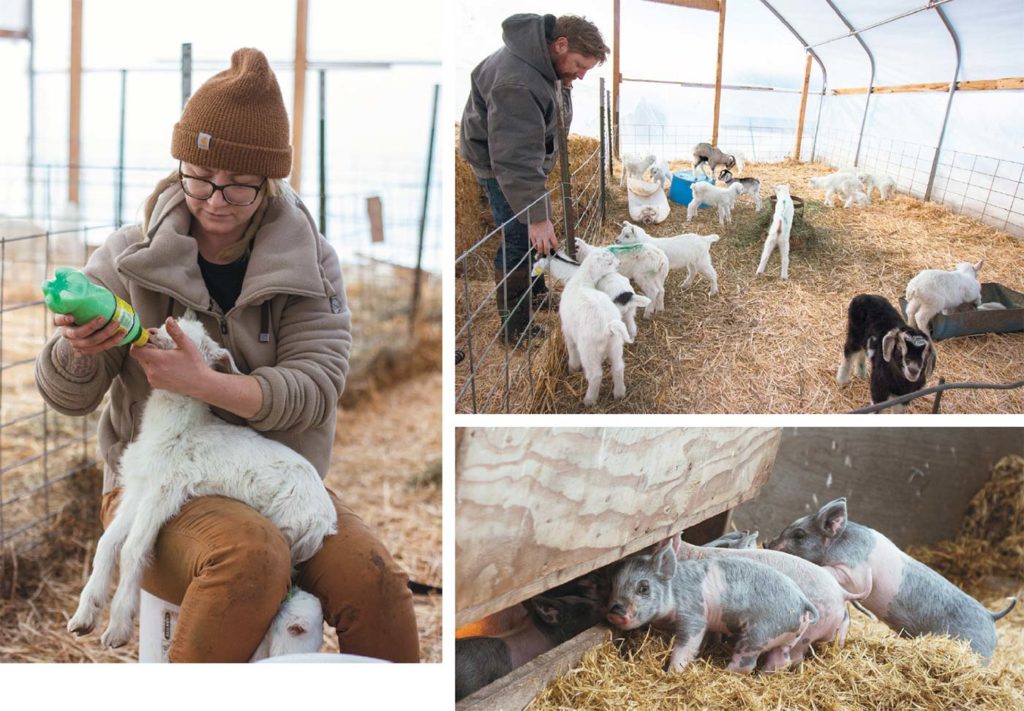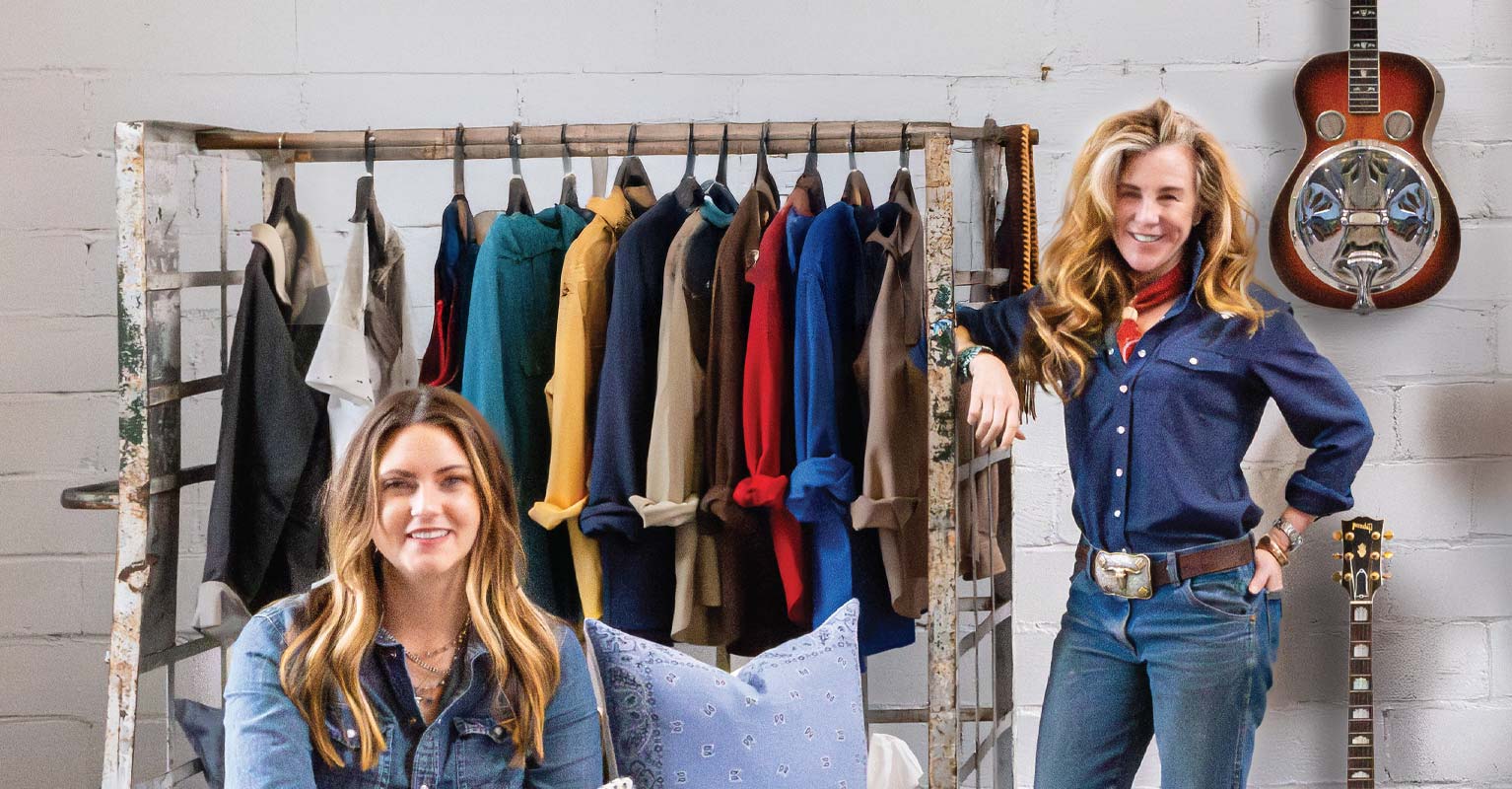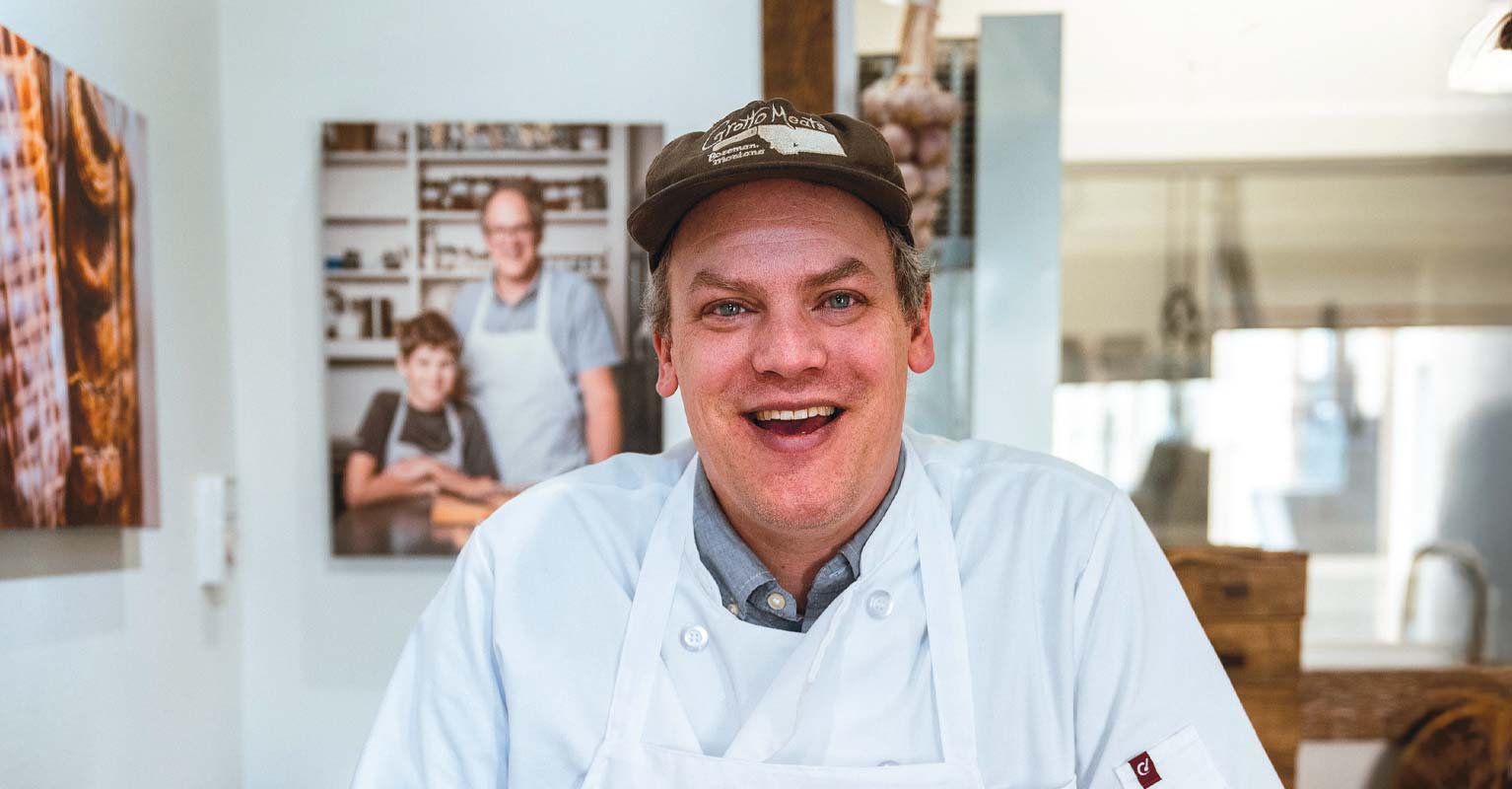Zeus, the well-known king of gods in Greek mythology, wouldn’t have been the powerful figure he was without the tender goddess Amaltheia. Legend has it she raised young Zeus after his mother gave him up in order to save him from a power-hungry Cronus. Amaltheia is portrayed as a goat, using her milk to nourish the young god and eventually her hide to protect him. Most famously, Zeus took her horn and fashioned the cornucopia, which became a symbol for abundance. Now Amaltheia, like many Greek gods and goddesses, lives among the cosmos known as the star Capella in the Capricorn constellation.
Nearly 43 million light-years from her cosmic home, Amaltheia lives on in a more earthly way. Just outside of Belgrade, Amaltheia Organic Dairy is thawing out after a week of subzero temperatures that happened to coincide with the annual birthing of this year’s goats and pigs. It’s still cold outside, albeit twice as warm as the previous week, but inside one of the large dome-shaped outbuildings it feels close to spring. Lining each side of the barn are days-old kid goats and some mothers that are still expecting.
Nate Brown makes his way down the aisle and stops at the end where kid goats are pushing each other off of overturned water buckets. The goats greet Nate, who is one of four Browns who own and operate Amaltheia Dairy. The babies sport colorful, painted markings on their foreheads, categorizing them into groups and adding to their already playful charm. Some of these goats will go on to children and young adults for 4-H projects, some to other small dairy producers, some will be used for noxious weed grazing, and some will stay here and go on to become breeding and milking stock.
Like many of the farms and ranches in Gallatin Valley, Amaltheia is multi-generational. Compared to some farms or ranches in Montana, though, it may seem both newer and smaller, but it’s efficacy and quality is second to none. The Brown family owns 20 acres and leases an additional 200 nearby. Amaltheia is in many ways a perfect example of the new West and how smaller multi-generational operations are going to carry on the farming and ranching heritage in an age of rapid land development and industry.
Mel and Sue Brown officially started Amaltheia on Thanksgiving Day in 2000. It took them a couple of years to decide to open their own cheese processing facility and they spent countless hours honing in on flavors, textures, and consistency until they created the product we know today. The Browns hail from Michigan, though Mel was raised in England. Mel worked professionally as a cattle embryologist and Sue’s background is in special education. The two met in Guatemala and eventually settled in Sue’s native Michigan and started a small farm there while raising their two children, Nate and Sarah, who are now both grown. Today, Sarah shares the title of head cheesemaker with Sue, while Nate works primarily on the farm with Mel.
According to Sarah, working on the farm as a family can be challenging, but she says there is great reward at the end of the day. “In farming, there are no days off, no down time, no breaks, and no good days and bad days. We just take it as it comes, one day at a time,” she says. “Being able to share in our successes and failures has strengthened our family and taught us to love and respect one another on an entirely different level. My parents are my heroes.”
“If you put the soil first, everything else takes care of itself.”
—Nate Brown

Amaltheia has made it their mission to not just produce the highest quality cheeses, pork, and vegetables, but to be completely sustainable and organic. “We are constantly trying to learn and improve upon our practices and methods and work with nature,” Nate says. “There are a number of terms used like organic, regenerative, and sustainable. I think they all have to do with farming with nature and biology. That is something that many of today’s conventional farmers forget about, but the biology of the soil is paramount in having a healthy, nutrient-dense crop.”
Nate says soil health and adopting a fully integrated approach became a primary focus during the 2008 recession. “I decided at that time, that if we were going to get out of the hole we were in, then the soil was going to make that happen. I spent much of my time learning about soil health, best practices, grazing, and integrating animals into our systems and we haven’t looked back since.”
As we make our way into the milking barn, Nate explains how they tie in the goat cheese production, pork, and vegetable parts of their operation. Their pigs are fed whey, a by-product of the cheesemaking process. The goat and pig manure, as well as used straw bedding, is composted for their organic vegetables. The farm is darn near self-sustaining and what they can’t do themselves they outsource to other Montana operations. They have a special hay blend they get from a farmer in Big Sandy, their meat is processed locally, they have their own cheese processing facility in Belgrade, and they are able to sell their products locally though restaurants, grocery stores, farmers markets, and directly to customers.
“Sustainability has always been second nature to us. It was instilled in us since we were young that you have to take care of your ecosystem; if you don’t, nothing will thrive,” Sarah says. “The idea of ‘reduce, reuse, recycle’ has always been the best mantra. Reduce the amount of waste, reuse any by-products, and recycle anything that you can’t make use of. I know it’s a simple practice, but it makes a world of difference.”
The cheesemaking process begins on the farm. In the milking building, a dozen or so goats are lined up on a milking platform where they happily eat their grains and bleat at one another. Once they have been milked, they are released outside and another round is brought in. This process continues until about 200 goats have moved through the rotation. Production at Amaltheia rounds out to be about 125 gallons of milk each day, which is pumped into a tank then transported to the cheesemaking facility a few miles away. There, the cheese goes through various temperature and culture adjustments and flavor is added, transforming from goat milk into the beautiful cheeses you see on the grocery store shelf.
Nate and I make our way into the pig barn, where a few litters of piglets run around in the deep hay, acting bashful and shy to our every step. I am struck by how small these brand-spanking-new piglets are compared to the large size of their mothers. The piglets are careful not to get too close to us, while their mothers eat the beets and other veggies the Browns fed to them that morning.
Nate and I stand in ankle-deep straw and talk about future plans for the farm. His passion clearly lies in soil health; he sees the family planting more vegetables and cover crops, eventually growing all the feed for the animals. “If you put the soil first, everything else takes care of itself,” Nate says, as a piglet builds up the courage to run between us. We turn to go see the boars who munch on feed in their outdoor pen. Standing in the pig pasture you get a full view of the whole farm. Even though it is the dead of winter, the farm is bustling and productive. Each arm of the operation supports the others and each one is meticulously maintained. All of the goats, pigs, vegetables, and greens come together in a lively display of earth’s abundance, making Amaltheia one giant cornucopia in the shadow of the Bridger Mountains.




